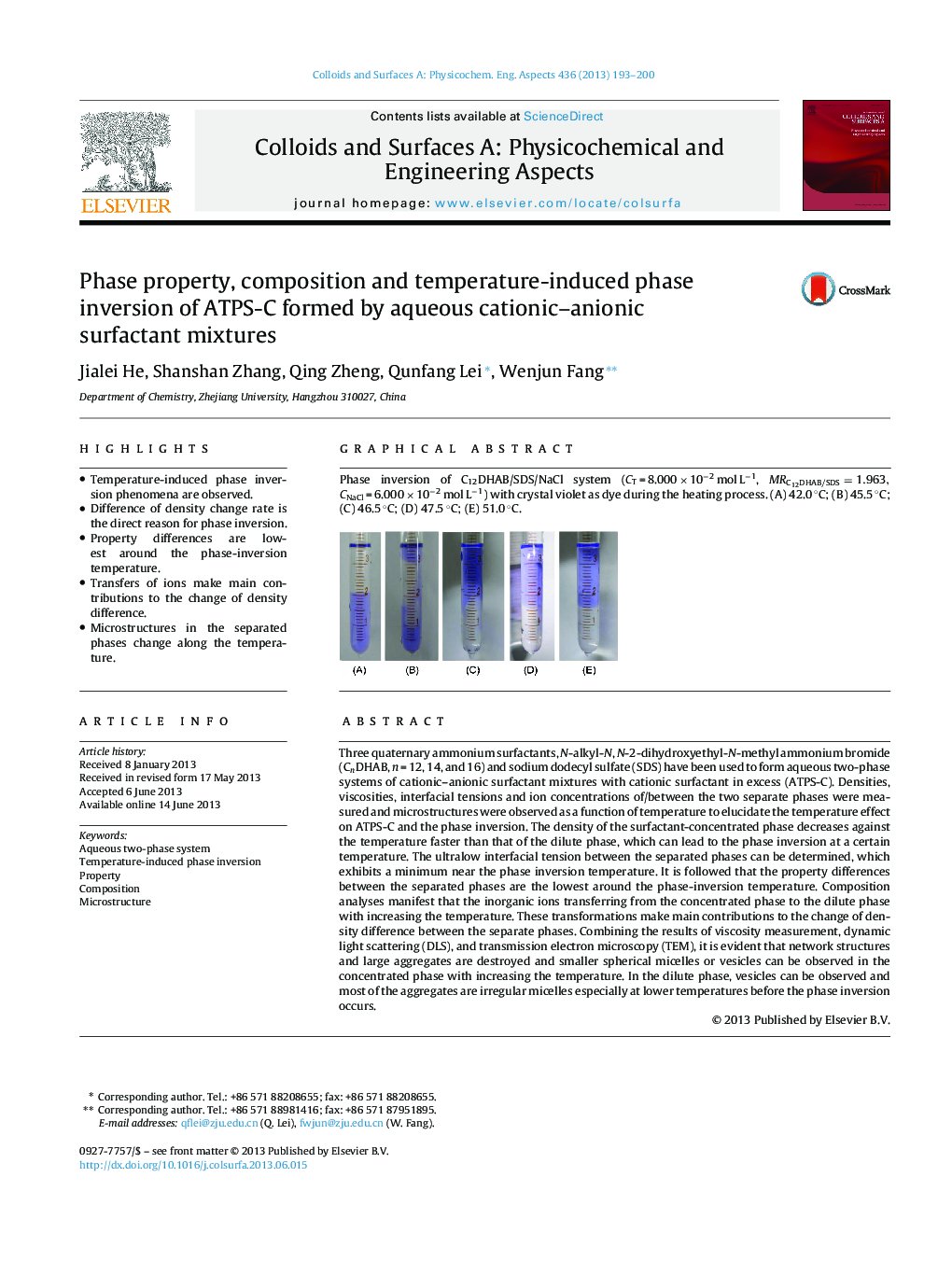| کد مقاله | کد نشریه | سال انتشار | مقاله انگلیسی | نسخه تمام متن |
|---|---|---|---|---|
| 593342 | 1453937 | 2013 | 8 صفحه PDF | دانلود رایگان |

• Temperature-induced phase inversion phenomena are observed.
• Difference of density change rate is the direct reason for phase inversion.
• Property differences are lowest around the phase-inversion temperature.
• Transfers of ions make main contributions to the change of density difference.
• Microstructures in the separated phases change along the temperature.
Three quaternary ammonium surfactants, N-alkyl-N, N-2-dihydroxyethyl-N-methyl ammonium bromide (CnDHAB, n = 12, 14, and 16) and sodium dodecyl sulfate (SDS) have been used to form aqueous two-phase systems of cationic–anionic surfactant mixtures with cationic surfactant in excess (ATPS-C). Densities, viscosities, interfacial tensions and ion concentrations of/between the two separate phases were measured and microstructures were observed as a function of temperature to elucidate the temperature effect on ATPS-C and the phase inversion. The density of the surfactant-concentrated phase decreases against the temperature faster than that of the dilute phase, which can lead to the phase inversion at a certain temperature. The ultralow interfacial tension between the separated phases can be determined, which exhibits a minimum near the phase inversion temperature. It is followed that the property differences between the separated phases are the lowest around the phase-inversion temperature. Composition analyses manifest that the inorganic ions transferring from the concentrated phase to the dilute phase with increasing the temperature. These transformations make main contributions to the change of density difference between the separate phases. Combining the results of viscosity measurement, dynamic light scattering (DLS), and transmission electron microscopy (TEM), it is evident that network structures and large aggregates are destroyed and smaller spherical micelles or vesicles can be observed in the concentrated phase with increasing the temperature. In the dilute phase, vesicles can be observed and most of the aggregates are irregular micelles especially at lower temperatures before the phase inversion occurs.
Phase inversion of C12DHAB/SDS/NaCl system (CT = 8.000 × 10−2 mol L−1, MRC12DHAB/SDS=1.963,MRC12DHAB/SDS=1.963,CNaCl = 6.000 × 10−2 mol L−1) with crystal violet as dye during the heating process. (A) 42.0 °C; (B) 45.5 °C; (C) 46.5 °C; (D) 47.5 °C; (E) 51.0 °C.Figure optionsDownload as PowerPoint slide
Journal: Colloids and Surfaces A: Physicochemical and Engineering Aspects - Volume 436, 5 September 2013, Pages 193–200